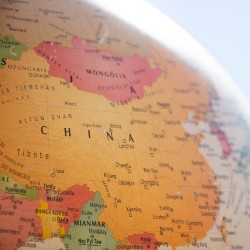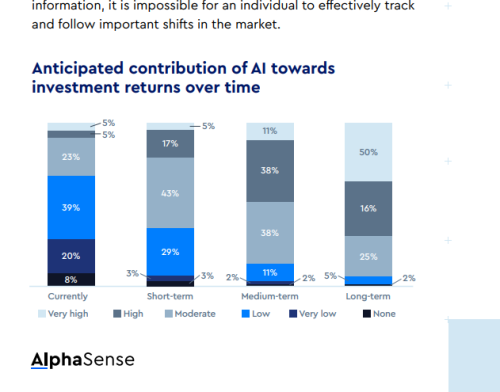The deepening energy crisis pushed global dividends to a record third quarter of 7 percent, resulting in $415.9 bn in payouts, according to the Janus Henderson Global Dividend Index.
The index analyzes dividends paid by the 1,200 largest firms by market capitalization. It notes that underlying growth – adjusted for special dividends, changes in currency, timing effects and index changes – was 10.3 percent in Q3, negatively impacted by the rising value of the dollar.
Globally, 90 percent of the companies recorded dividend rises, down from 94 percent in the first six months of 2022.
 Oil companies hiked their shareholder payouts, contributing to record payouts in the US and Canada, where dividends were up 6.7 percent and 13.3 percent, respectively, on an underlying basis.
Oil companies hiked their shareholder payouts, contributing to record payouts in the US and Canada, where dividends were up 6.7 percent and 13.3 percent, respectively, on an underlying basis.
In the US, the financial sector accounted for almost two fifths of the underlying increase, with strong contributions also coming from the pharmaceutical, technological and general retail sectors.
‘Given the challenges facing investors in 2022, record-high dividend payments are a rare silver lining for those who rotated assets into dividend-paying stocks in defensive sectors,’ says Matt Peron, director of research at Janus Henderson.
‘Looking ahead to 2023, slower economic growth is likely to impact dividend payments globally. In the US, however, dividend payments tend to rise and fall far less than in other parts of the world, as demonstrated during the depths of the Covid-19 lockdowns, which is welcome news for income investors.’
Shareholders in the Asia-Pacific region – except Japan – also saw record dividends, with Taiwan and Hong Kong being the main drivers. Australia was the laggard during the third quarter owing to sharply lower mining dividends, which led to one fifth of companies cutting payouts.
Japan reported 13.1 percent dividend growth, in line with the second quarter, but the report warns that Q3 patterns ‘can be misleading’ as the majority of dividends in the region are paid in Q2 and Q4.
‘The key factor that will spill into the crucial fourth quarter is the weakness of the yen, which knocked 15 percentage points off the headline growth rate. One-off special dividends were also lower in Q3 and other technical factors made a significant impact, too,’ it notes.
In the UK, dividends rose 2.5 percent with the report finding that a big decline in mining dividends offset solid growth in other sectors. UK payouts dipped 6.4 percent on a headline basis due to the pound’s value dropping several times over the quarter. But nearly 85 percent of companies in the region either boosted or maintained dividends.
In continental Europe, underlying growth was 10.2 percent, though the headline total dropped 10.1 percent due to European currencies losing value and lower one-off special dividends.
‘European dividends are concentrated in the second quarter, so the third quarter is seasonally much quieter and skewed toward a few particular sectors and countries,’ notes Janus Henderson. ‘Collectively, 96 percent of European companies in our index increased their dividends or held them steady, in line with Q2.’
China’s Q3 dividend jump
 Dividends in China rose 6.7 percent and accounted for more than half of the quarterly total paid by emerging markets. A strong contribution came from the Chinese energy sector thanks to booming prices, though more than one third of regional companies indexed by Janus Henderson saw payouts drop.
Dividends in China rose 6.7 percent and accounted for more than half of the quarterly total paid by emerging markets. A strong contribution came from the Chinese energy sector thanks to booming prices, though more than one third of regional companies indexed by Janus Henderson saw payouts drop.
Overall, the research shows emerging markets’ recorded a10 percent underlying growth in the third quarter, bringing optimism around dividend growth in the latter part of the year.
‘The exceptional strength of oil dividends in Q3 – particularly in Asia and emerging markets – and significantly larger one-off special dividends have prompted a $30 bn upgrade in our full-year headline figures,’ notes the report.
Janus Henderson now expects dividends to rise 8.3 percent in headline terms for the full year, reaching a total of $1.36 tn in payouts, and anticipates underlying growth to reach 8.9 percent.
But the report authors note that the ‘exceptional’ boost in dividends is not something investors should get used to. ‘We do not attempt to forecast oil prices, but the current exceptional level of dividends is unlikely to be permanent as energy prices are cyclical and will drop again in time,’ they write.
‘Indeed, oil prices are already significantly lower than earlier in the year, though natural gas remains high. Meanwhile, banking dividends, which comprise the largest portion of the global total, have completed their recovery from the pandemic and are now benefiting from a rising interest rate environment.’










